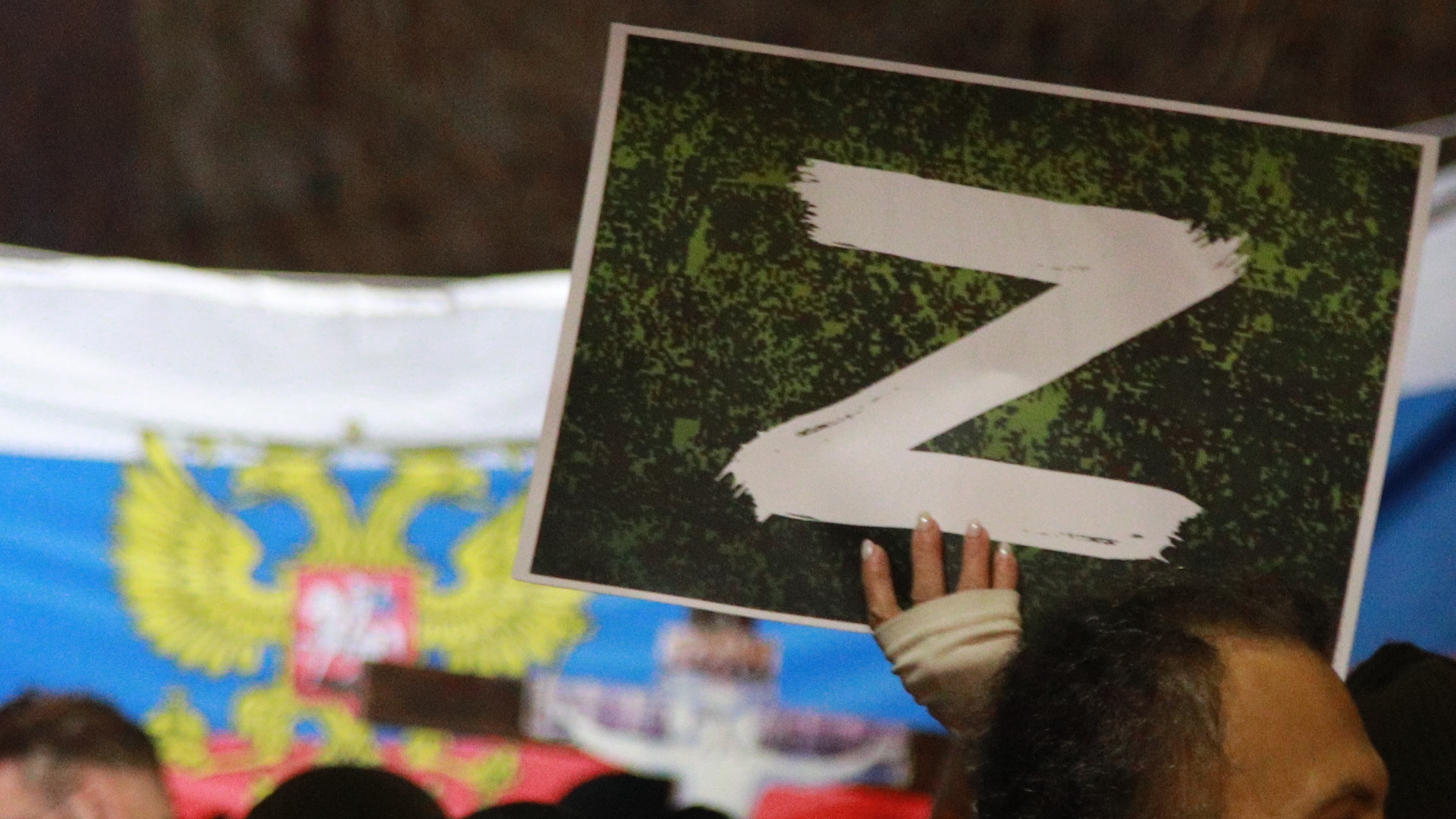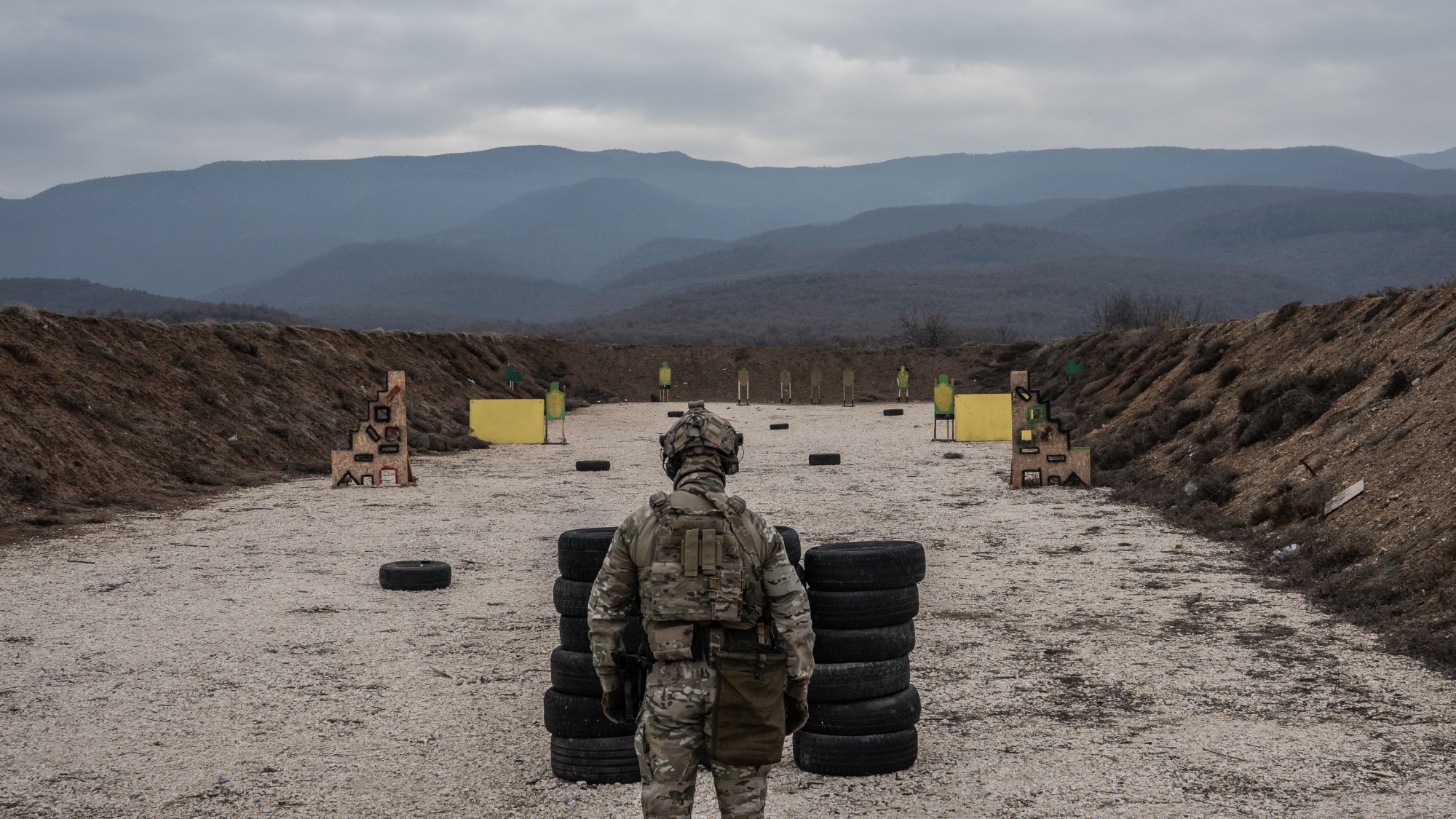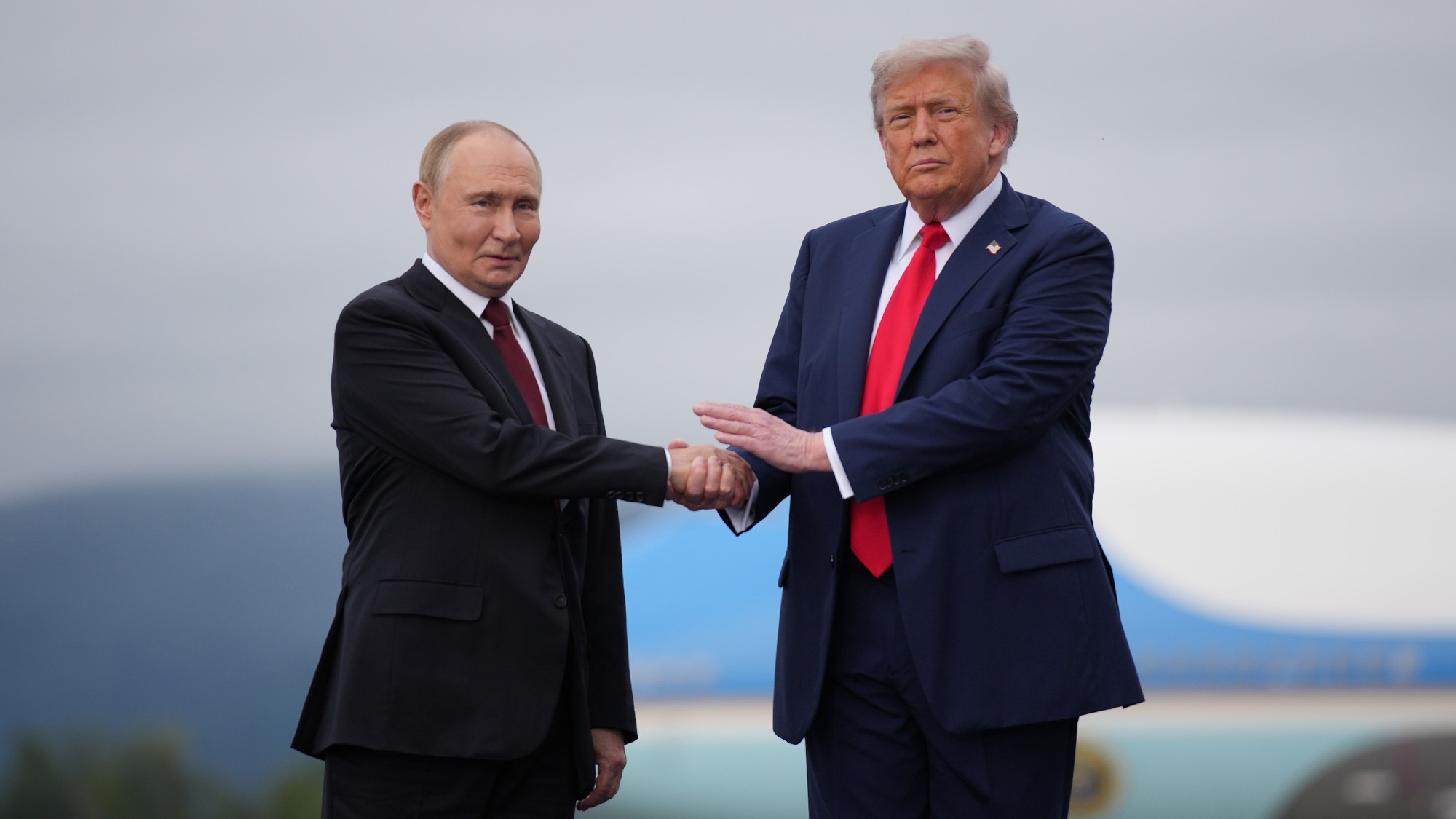The meaning behind the Z Russian military symbol
Taken from the Latin alphabet, it has become a sign of support for Putin’s war

A new symbol of support for Russia’s war against Ukraine has emerged – a white “Z” often stylised to appear as if written in thick brushstrokes.
The letter, first seen on Russian tanks and military vehicles, has been co-opted by pro-war and pro-Putin groups in Russia and has been seen paraded on the signs and clothing of those who support the invasion of Ukraine.
Where does the letter come from?
The Week
Escape your echo chamber. Get the facts behind the news, plus analysis from multiple perspectives.

Sign up for The Week's Free Newsletters
From our morning news briefing to a weekly Good News Newsletter, get the best of The Week delivered directly to your inbox.
From our morning news briefing to a weekly Good News Newsletter, get the best of The Week delivered directly to your inbox.
The “Z” symbol, which does not exist in the Cyrillic Russian alphabet, was first spotted on 22 February, “emblazoned on Russian military vehicles rolling into Ukraine’s Donetsk region”, said Insider.
Some have speculated that the symbol, “which appeared on tanks framed by squares, triangles, and other painted shapes”, could be a way to identify infantries, while others have suggested that it has a more symbolic meaning.
Kamil Galeev, a former Galina Starovoitova Fellow on Human Rights and Conflict Resolution at the Wilson Center think tank, tweeted that some interpreted the “Z” as short for “za pobedy”, which is the Russian term for “victory”.
Others say the “Z” describes where the unit will be deployed geographically – the symbol may be short for “zapad”, meaning “west”, meaning the unit may be west-bound.
A free daily email with the biggest news stories of the day – and the best features from TheWeek.com
According to a Ukrainian source who spoke to The Sun, the symbols are a way of distinguishing between Ukrainian and Russian forces in order to “avoid friendly fire once action begins”.
“It’s vital that any attacking force can be distinguished, particularly from the air where Russian forces will have complete control. The Ukrainians have very similar tanks and vehicles and will want to reduce the risk of friendly fire,” the source told the paper.
As the war in Ukraine looks to be increasingly “bogged down” and news of the increasing number of casualties starts to reach Russia, Putin’s supporters are “going to ever greater lengths to show their fealty to their leader and the regime”, said The Telegraph.
Who is using the symbol?
The symbol was first used “coyly” by only a “handful of people” to show their support for Russian soldiers. But it has seemingly gained “official support” from the Kremlin, helping it go “mainstream and international”.
In the city of Kazan, southwest Russia, the chairman of a cancer charity that provides hospice care for dying children “organised for the children and their mothers to line up in a giant ‘Z’ in the snow”, said the paper. He then photographed the stunt using a drone and posted it on the hospice website.
Elsewhere, “hundreds of cars dubbed with a ‘Z’ drove in convoys around Russia’s main cities honking their horns flying flags”, reported the paper.
And “two slickly produced videos” have also appeared on social media channels, which show hundreds of people in black sweatshirts emblazoned with the letter Z “waving flags and shouting their support for Putin and his war in Ukraine”.
The Russian gymnast Ivan Kuliak had the symbol taped on the front of his kit as he stood on the podium next to the gold medallist, Ukraine’s Illia Kovtun, at a gymnastics World Cup event in Doha, Qatar, reported The Guardian.
“The International Gymnastics Federation (FIG) confirms that it will ask the Gymnastics Ethics Foundation to open disciplinary proceedings against Ivan Kuliak following his shocking behaviour at the Apparatus World Cup in Doha, Qatar,” a statement from the ruling body said.
From today, all Russian and Belarusian gymnasts are banned from international competitions.
-
 Political cartoons for January 4
Political cartoons for January 4Cartoons Sunday's political cartoons include a resolution to learn a new language, and new names in Hades and on battleships
-
 The ultimate films of 2025 by genre
The ultimate films of 2025 by genreThe Week Recommends From comedies to thrillers, documentaries to animations, 2025 featured some unforgettable film moments
-
 Political cartoons for January 3
Political cartoons for January 3Cartoons Saturday's political cartoons include citizen journalists, self-reflective AI, and Donald Trump's transparency
-
 What will happen in 2026? Predictions and events
What will happen in 2026? Predictions and eventsIn Depth The new year could bring peace in Ukraine or war in Venezuela, as Donald Trump prepares to host a highly politicised World Cup and Nasa returns to the Moon
-
 All roads to Ukraine-Russia peace run through the Donbas
All roads to Ukraine-Russia peace run through the DonbasIN THE SPOTLIGHT Volodymyr Zelenskyy is floating a major concession on one of the thorniest issues in the complex negotiations between Ukraine and Russia
-
 US offers Ukraine NATO-like security pact, with caveats
US offers Ukraine NATO-like security pact, with caveatsSpeed Read The Trump administration has offered Ukraine security guarantees similar to those it would receive from NATO
-
 How Bulgaria’s government fell amid mass protests
How Bulgaria’s government fell amid mass protestsThe Explainer The country’s prime minister resigned as part of the fallout
-
 Europe sets 2027 deadline to wean itself from Russian gas
Europe sets 2027 deadline to wean itself from Russian gasIN THE SPOTLIGHT As negotiators attempt to end Russia’s yearslong Ukraine invasion, lawmakers across the EU agree to uncouple gas consumption from Moscow’s petrochemical infrastructure
-
 Is Europe finally taking the war to Russia?
Is Europe finally taking the war to Russia?Today's Big Question As Moscow’s drone buzzes and cyberattacks increase, European leaders are taking a more openly aggressive stance
-
 Pushing for peace: is Trump appeasing Moscow?
Pushing for peace: is Trump appeasing Moscow?In Depth European leaders succeeded in bringing themselves in from the cold and softening Moscow’s terms, but Kyiv still faces an unenviable choice
-
 Femicide: Italy’s newest crime
Femicide: Italy’s newest crimeThe Explainer Landmark law to criminalise murder of a woman as an ‘act of hatred’ or ‘subjugation’ but critics say Italy is still deeply patriarchal